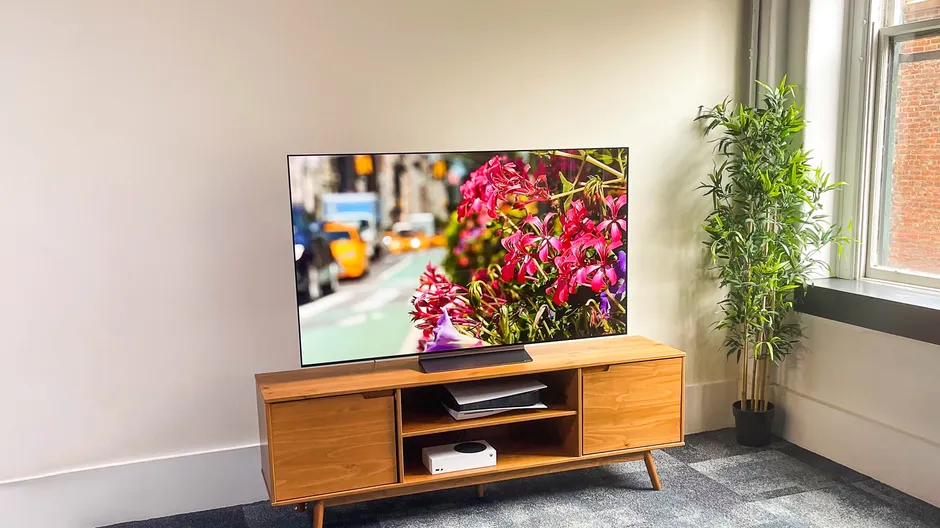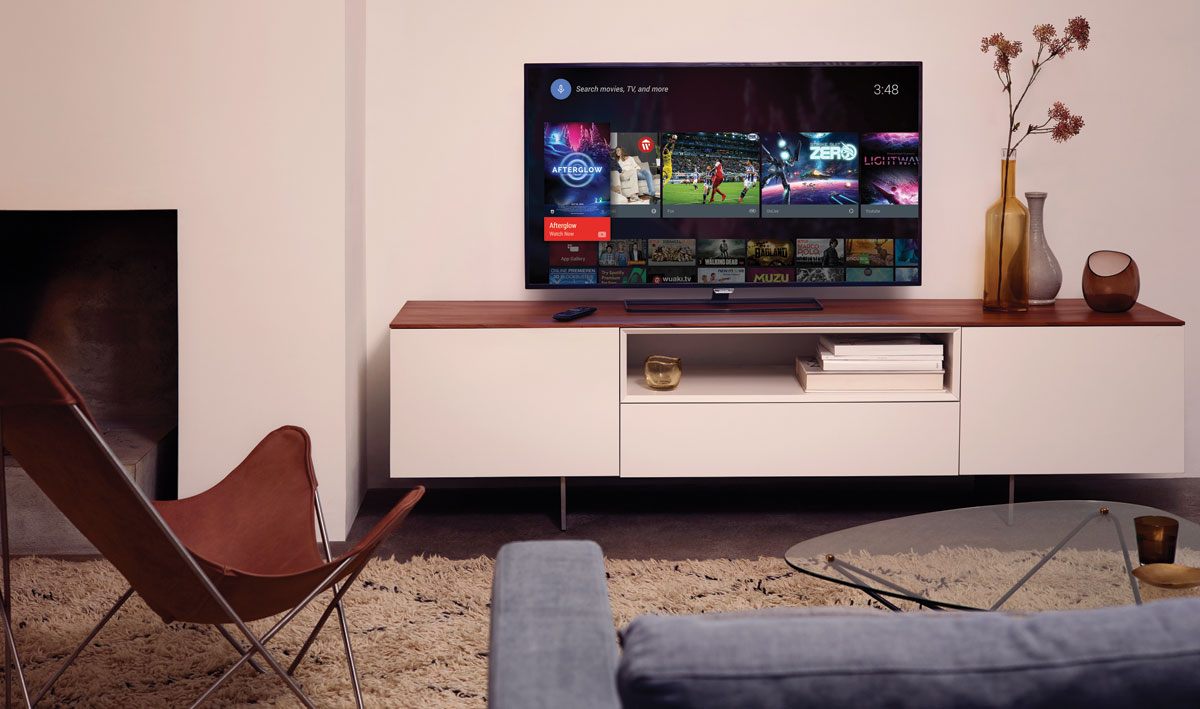Is 19 inches the perfect size for your space? You want a TV that looks great and fits your room, but finding the right size can be confusing.
In this complete guide, we’ll help you make an informed decision on the ideal size of TV for your home.
Finding the perfect size for your space when it comes to 19 inch TVs can be tricky. To make matters even more challenging, the many models, features, and technologies on the market can quickly overwhelm consumers. With this guide, you can make sure that you get the right TV size for your space while also finding the perfect features and technology that will suit your lifestyle needs.
Our guide begins by exploring different types of TVs and different features available with them, then provides helpful tips on how to use our TV size calculator tool to determine which size is best for your space. We will also provide tips on how to position your TV so you can enjoy the highest quality viewing experience. By following this guide, you should be able to find a 19 inch TV that not only fits well in your home but is something you’ll enjoy watching every day.
Definition of 19 inch TVs
A 19 inch television is a small to medium sized TV, typically measuring around 18 to 21 inches in width. These televisions were traditionally seen as standard options for households and small spaces, but with the introduction of larger flat screen televisions over the last decade, 19 inch TVs are now primarily used in bedrooms or smaller apartments.
Many 19 inch TVs offer Full HD resolution and other smart features, which can make them ideal for limited spaces without compromising on quality viewing experience.
In this guide, we’ll explore all the considerations you should make when deciding whether a 19 inch television is the right size for your space.
Importance of finding the right size for your space
Choosing the right size TV for your space is crucial. A 19 inch TV can provide a decent viewing experience, however it will still depend upon how near or far you are from the screen. Therefore, it’s important to consider not only the size of the TV but also how far away you sit from it. For instance, if you have a large room and plan on sitting 10 feet away from your 19 inch TV, then this size may not be adequate for your requirements. It is best to get a minimum screen size of 24 inches at this distance; if you are looking to upgrade from a 19 inch, this could be an ideal option for you.
Similarly, if your available space is limited and you don’t want to compromise on quality viewing time, then getting closer to the screen would ensure that you get maximum impact from each frame. With a smaller space and closer viewing distance – around 5 feet – then a 19-inch set may prove perfect for those wanting something compact yet visually impactful. It could offer the viewers enhanced clarity while still maintaining portability and maneuverability during transportation and placement in your home or office space.
Purpose of the guide
This guide outlines the important factors to consider when choosing a 19” television; resolution, refresh rate, contrast ratio, and input type. By understanding what these specifications mean and determining their relevance to your situation, you can be sure to choose a device that will fit your needs and look great in your space.
In addition to TV basics such as the picture size, resolutions, or input ports like HDMIs and USBs, we discuss different types of TVs available on the market today. We review features like advanced lighting technology (OLED or QLED) or Smart TV options (Android/Chrome OS and Voice Control functions).
Selecting the right screen size is an important part of creating an ideal viewing experience; 19” TVs coupled with optimal quality components provide greater flexibility for any home theatre setup. Knowing how big a 19” TV is relative to the overall viewing area is essential for optimizing viewing angles in any given space.
With this guide in hand, you will have all of the information necessary for finding the perfect size for your entertainment system.
Factors to Consider When Choosing a 19 Inch TV
Before you buy a 19 inch television, you should consider several factors that may affect your choice. These include the type of display, the features available, and the viewing distance.
Display Type – There are two dominant types of displays used in modern televisions – LED (light-emitting diode) and LCD (liquid crystal display). LED displays come in two forms: full array LED and edge LED. Full array LED televisions feature closely spaced rows of tiny LEDs behind the LCD panel that enable better contrast, brighter colors and deeper blacks. Edge LED televisions use fewer LEDs in order to light up the edges of the LCD panel. Each display has its own unique characteristics so it is important to understand how each one performs before making a purchase decision.
Features – As technology has progressed, newer TV models are now offering more advanced features like 4K resolution, HDR (high dynamic range), image processing capabilities, motion interpolation, voice assistance and streaming services such as Netflix or Hulu Plus. Depending on your viewing habits and preferences, these additional features can greatly enhance your viewing experience.
Viewing Distance – You should also take into consideration where you will be placing your 19 inch TV relative to where you will be sitting while watching it in order to determine the optimal size TV for that location. A general rule of thumb is that television screens should be 1 ½ to 2 ½ times bigger than the nearest viewer’s seating distance in inches (e.g., if someone is sitting 6 feet away then they should look for at least 47″ (6′ x 2′ =12″, 12″ x 2 = 24″, 24″+23 =47). However it’s ultimately up to you what size works best for your situation as this rule only serves as general guidance when making a purchase decision.
Room size and layout
When shopping for a 19 inch television, it’s important to consider the size and layout of the room where you plan to place your TV. The ideal distance from the seating area to the TV depends upon the size and shape of your room as well as personal preference. For a 19 inch TV, choosing a viewing distance that is within your ideal range can help ensure you get the best out of your viewing experience.
The size of your room is an important consideration when picking out a television. If the room is very small or crowded, you may want to select a smaller screen size or find ways to make it look bigger (e.g., by hanging artwork or using mirrors). If, however, you have more space and plan to watch movies on it occasionally, then sizing up can give an enhanced movie viewing experience and provide extra space for sound systems and other components. For example, if 10-12 feet separates your seating area from where you want to mount your new 19 inch TV, this would be considered in optimal viewing range depending on seating layout and other factors such as light sources in the room.
Additionally, it’s important to think about how many people will be watching with – if only one person is watching at one time then getting a bigger set might not be necessary; conversely if more than one person will be watching regularly then considering something bigger than 19 inches might make sense.
Viewing distance
Viewing distance is an important factor to consider when choosing your 19-inch television. The ideal distance between you and the TV depends on the size of the screen, resolution and type of picture. Generally, a viewing distance of 1-2 times your screen size is best in order to ensure that you get a clear view without any distortion due to being too close.
For example, for a 19-inch television, it’s best to sit around 1.5 – 3 feet away from the screen in order to get the most out of your viewing experience. If you have a larger room where this isn’t feasible, then choose a bigger TV that will still allow for optimal viewing comfort even when at a larger distance from the television set.
Screen resolution
Screen resolution is an important factor to consider when buying a television. The average 19 inch TV has a resolution of 768 x 1366, known as HD Ready, offering DVD-quality images. Some TVs are even available with higher resolution (1080p Full HD) for top picture quality.
It is important to note that screen resolution is also dependent on the type of set – LCD TVs usually offer higher resolutions compared to LED TVs. Therefore, it pays to always research what type of TV and what resolution you need before purchasing.
Connectivity options
When it comes to finding the perfect 19-inch TV, one of the most important factors to consider is the connectivity options it offers. Most TVs come with built-in wi-fi and Ethernet ports, which allow you to connect to streaming services like Netflix or Hulu and access online gaming services such as PlayStation Now and Xbox Live.
Depending on the model, other common connectivity options include HDMI, composite video, component video and VGA ports. Many models also include a hybrid tuner that enables you to watch both over-the-air programming and digital cable channels.
Finally, many smart TVs also offer USB ports for playing movies from external multimedia storage devices such as thumb drives or Blu-ray discs.
Tips for Setting Up Your 19 Inch TV
Setting up a 19 inch TV in your home or office can be a great way to make your entertainment space look clean and modern. Here are a few tips to help you get the most out of your TV:
- Do some measuring. Before you begin, measure the area that the TV will occupy. Keep in mind that the TV’s width should not exceed 60% of its total height to create an optimal viewing experience. It’s also important to measure the depth of any area where the TV will go and make sure that it is large enough to fit.
- Invest in an appropriate stand or mount. Many 19-inch TVs come with their own stand, but these often do not provide flexible options for placement, like tilting and swiveling capabilities If you have more than one option for where you can mount or place your 19-inch television, investing in an appropriate mounting bracket or stand will give you more flexibility. Just be sure to measure the size and weight of your television before purchasing a mounting bracket or wall mount, so they can support it safely without damaging itself or other items around it!
- Keep cables organized. Whether you use a floor stand or wall mount for your television, keeping cords and cables organized is key to creating a clean look for your room. Consider using cable holders and/or cable ties where appropriate; this will help ensure that all wires are safely secured away from view (and out of reach of children).
- Take into account ambient lighting. Ambient lighting can affect how well you enjoy shows on your 19-inch tv so make sure there is no direct sunlight falling on it when tuning into programs! If there’s too much light in the room, consider getting blackout curtains for windows or shades for the tv itself – both are affordable options that can enhance viewing experience incredibly!
Placement of the TV
Placement of the TV is key in finding the right size and optimizing your viewing experience. For the most comfortable viewing, place your television at eye level when seated. Begin by measuring the distance between your viewing spot and where you want to put the TV, as this will help determine what size is best for your space.
Be sure to allow at least 3 feet of space between you and the screen as this will help reduce eyestrain. Additionally, if you’re mounting your TV onto a wall you should make sure that it’s high enough so that it isn’t blocked by furniture or other obstacles. When done properly, these simple guidelines can ensure an optimal experience when watching television from any spot in the room.
Setting up the TV
When setting up the television, it is important to consider how much space you have available. The larger the TV, the larger your living or viewing space needs to be. Once you have found your perfect-sized 19 Inch TV, you will need to take a few measurements. You should measure the height of your area as well as figure out where the TV will be placed based on its seating distance from whatever area it’s in. This depends on the type of room, if outside in an open area or closed up inside.
Next, you’ll need to determine what sort of wall mount or stand are required for your 19 Inch TV. Wall mounts come in various sizes and styles so make sure that yours is compatible with your chosen television and ensures that it can hold its weight securely. Remember to secure any screws or clamps properly when attaching a wall mount to ensure that there is no damage done to walls or even worse – personal injury!
If using a stand for your 19 Inch TV, be sure that it is stable enough on all four sides and should not easily tip over with gentle pressure on three sides because of an imbalance in weight (supporting equilibrium). If sitting on thin carpet, putting some kind of felt slider pads under each foot can help keep it balanced and stable while positioned in tight spots. Once done securely mounting your new 19 inch screen, enjoy hours of entertainment!
Conclusion
Ultimately, the size of 19-inch TV you should purchase for your living space depends on several factors, such as the size of your room, viewing habits, available budget and personal preference. Before purchasing a 19-inch TV, measure the distance from where you sit to the wall that will hold your TV and make sure that it is proportional to the size of room. Consider what kind of sound system you want to pair with your TV so that you can get the most out of all content viewed on it. It’s also important to factor in how much space you want in between other furniture in relationship to where you plan on placing this smaller-sized television.
Finally, use online reviews or go into local stores/specialty shops when considering buying a 19-inch TV; look not only at what they offer in design and performance but also prices and warranties so that you can make sure you are getting a quality product at an affordable price. And when all these components are taken into account, take the plunge and purchase the perfect 19-inch TV for your home or office!
FAQs
Is a 19 inch TV too small?
It depends on the intended use and viewing distance. A 19-inch TV may be suitable for small spaces and for use as a secondary monitor, but it may be too small for a primary viewing experience.
What size TV should I get for my space?
The recommended TV size for a space depends on the room’s dimensions, viewing distance, and personal preferences. A general guideline is to choose a TV that is proportional to the room size and seating distance.
How big is a 19 inch TV?
A 19-inch TV typically measures approximately 16 inches wide and 9 inches tall, with a diagonal screen size of 19 inches.
Does anyone make a 19 inch TV?
Some manufacturers still produce 19-inch TVs, although they are becoming less common as larger screen sizes become more popular.
What size TV is best for small room?
For a small room, a TV with a screen size of 32-43 inches is usually recommended. However, the optimal size depends on the room’s dimensions and viewing distance.
What size TV is best for 10 feet away?
For a viewing distance of 10 feet, a TV with a screen size of 70-75 inches is recommended. However, personal preferences and room dimensions may vary.
What is the most popular TV size?
The most popular TV size is currently around 55 inches, although this can vary depending on the region and market trends.
What happens if TV is too big for room?
If a TV is too big for the room, it can cause eye strain, discomfort, and a poor viewing experience. It may also lead to a distorted or blurry picture due to the closer viewing distance.
What size TV do I need for 12 feet away?
For a viewing distance of 12 feet, a TV with a screen size of 80-85 inches is recommended. However, personal preferences and room dimensions may vary.
What size TV is best for a 10×10 room?
For a 10×10 room, a TV with a screen size of 43-49 inches is recommended, although the optimal size depends on viewing distance and personal preferences.
See Also-
- Best outdoor tv enclosure
- Best tv stands for 65 inch tv
- Best tv stand for 85 inch tv
- Best tv keyboard
- Best tv for video wall

